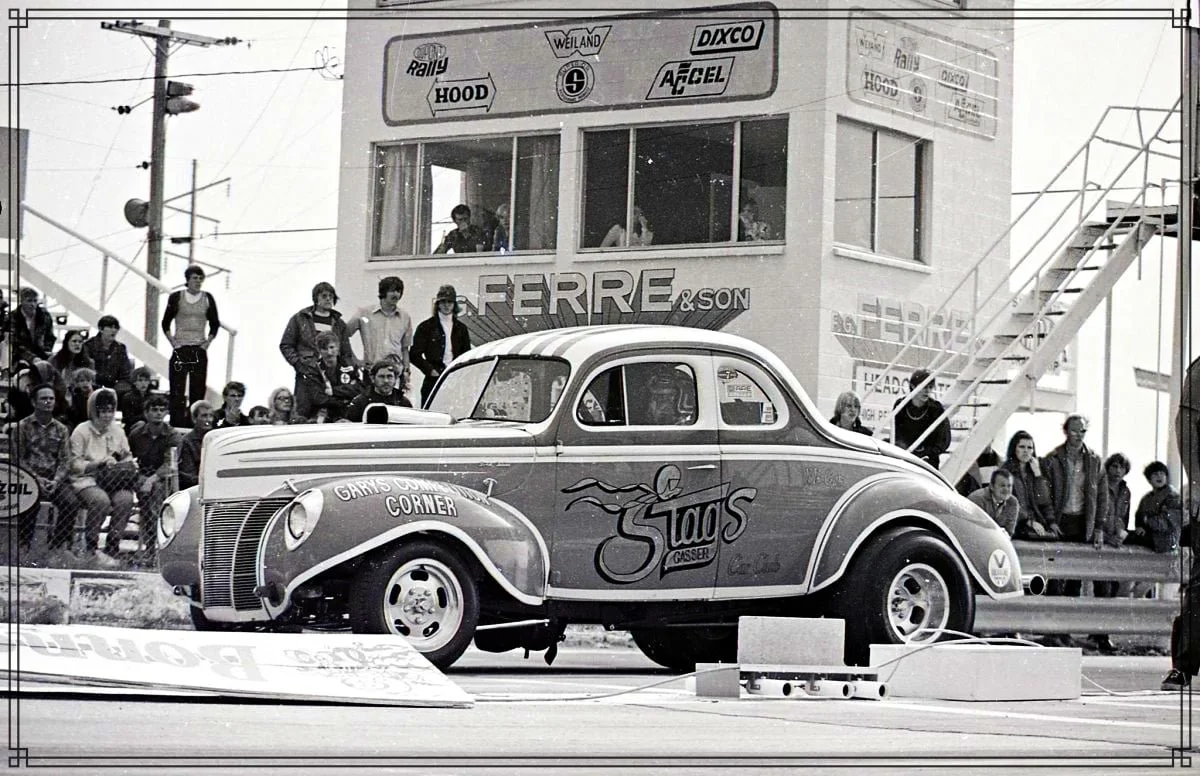Bonneville then Rocky Mountain Raceway
Bonneville Raceway (1968–1986)
By the mid-1960s, Utah’s racing community was ready for something bigger. A group of enthusiasts—Dick Godfrey, Bob Gee, Jim Campbell, and the Howard Haynes family—envisioned a modern motorsports facility that could rival the best in the West.
In 1966, they purchased 60 acres of land at 6555 West 2100 South, on Salt Lake’s west side, and invested $250,000 into a racing complex unlike anything Utah had seen before. The new Bonneville Raceway wasn’t just a drag strip—it was a full multi-use venue that included:
A half-mile stock car oval, built for Saturday night wheel-to-wheel action.
A 1.8-mile motorcycle and sports car road course, offering a technical, twisting layout rare in the region.
A nearly 3,000-foot paved drag strip, constructed to National Hot Rod Association (NHRA) standards.
Opening Weekend
The grand opening came in July 1968, when Bonneville hosted its first official drag race on July 23–24. Racers from across Utah and surrounding states brought hot rods, dragsters, and muscle cars to the new track. The excitement was immediate. By August 1968, more than 5,000 fans packed the stands, confirming that Bonneville Raceway was destined to become Utah’s motorsports hub.
Growth and Glory Years
Throughout the late 1960s and early 1970s, Bonneville was the beating heart of Utah racing. It provided local drivers a professional-grade track where they could test their machines against the best competition. Stock car Saturdays, drag racing Sundays, and motorcycle events filled the weekends with speed, noise, and adrenaline.
In 1973, the track entered a new era when Bob Ipson leased the facility from the Haynes family. Over the next 14 years, Ipson invested more than $600,000 in improvements, upgrading the racing surface, safety systems, and spectator amenities. Under his leadership, Bonneville Raceway became a recognized stop on the regional circuit, drawing competitors from across the western United States.
Fans and drivers alike came to see the track not only as a place to race, but as a community gathering space—a proving ground where friendships were built around shared passion for horsepower and speed.
The Transition to Rocky Mountain Raceway (1986–2018)
In 1986, Ipson stepped aside, and one of the original founders, Dick Godfrey, took over the lease. The Bonneville name was already legendary, but the facility soon entered a new chapter.
In 1995, businessman Spencer Young purchased the track and renamed it Rocky Mountain Raceway (RMR). Under its new banner, the venue grew into Utah’s premier motorsports park, hosting drag racing, oval racing, motocross, demolition derbies, and special events that filled the stands summer after summer.
By the 2000s, RMR was more than a racetrack—it was a tradition. Generations of Utahns spent their weekends under the lights, cheering from the bleachers as drivers chased victory and glory.
In 2014, the property was sold to Freeport West, though the racing community secured a five-year extension to continue through the 2018 season. On its final night, thousands of fans and drivers returned to celebrate a half-century of history, saying goodbye with one last checkered flag.
When the track was finally demolished, replaced by commercial development, it marked the end of an era. From its bold beginnings in 1968 as Bonneville Raceway to its final lap in 2018 as Rocky Mountain Raceway, the facility embodied Utah’s love of speed and left behind memories that still roar in the hearts of racing fans


